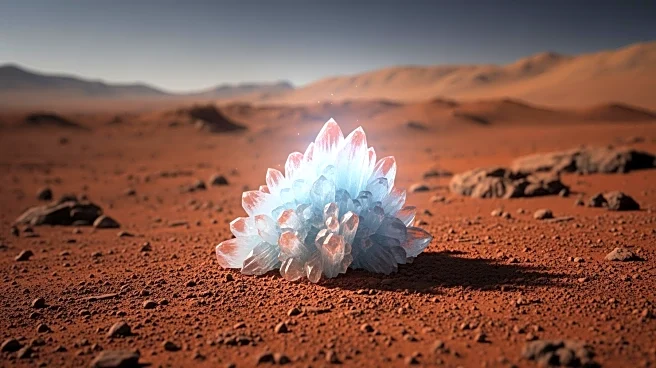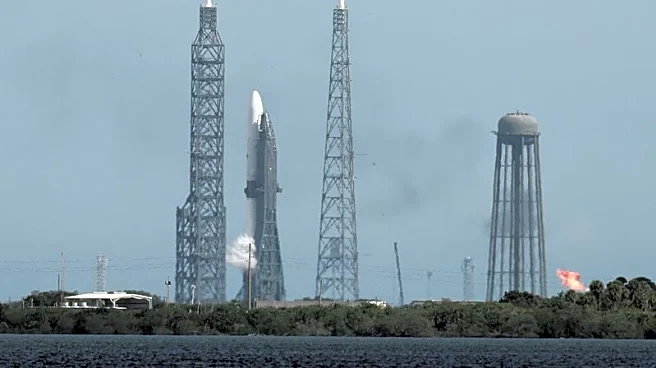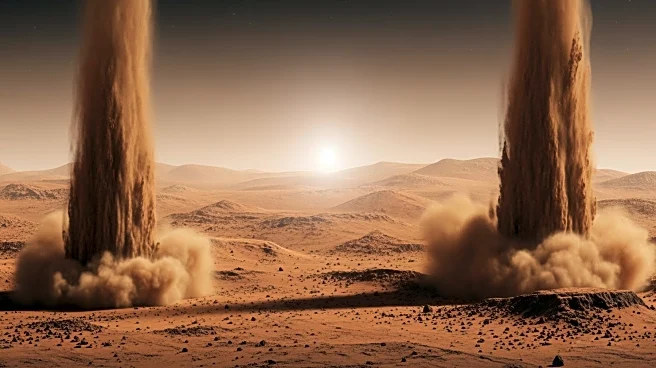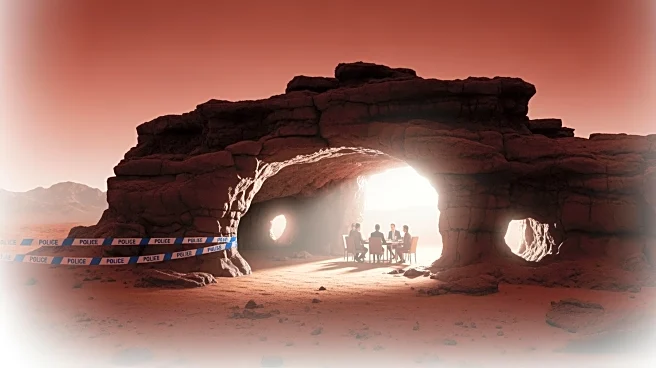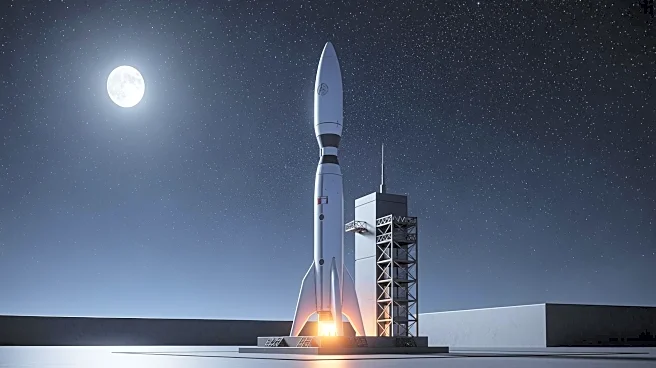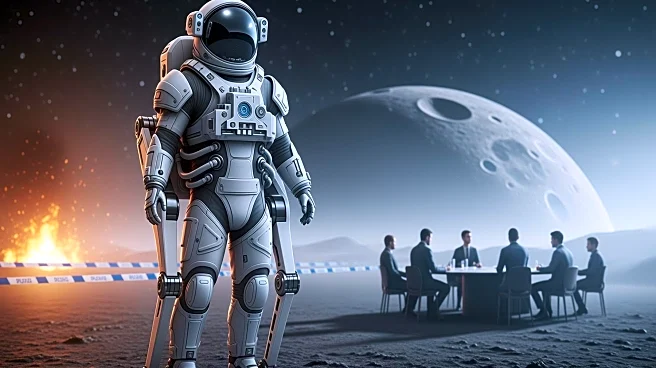What's Happening?
On November 13, 1971, Mariner 9 became the first spacecraft to orbit another planet, marking a significant milestone in space exploration. Launched on May 30, 1971, Mariner 9 was tasked with an expanded
mission profile following the failure of its counterpart, Mariner 8. The spacecraft's objectives included surface mapping, atmospheric monitoring, and the acquisition of approximately 3,000 photographs. Upon arrival at Mars, Mariner 9 encountered a global dust storm but was designed to withstand such challenges, allowing it to commence its mission once the storm subsided. Over the course of a year, Mariner 9 returned 7,329 photos, mapped 85% of the Martian surface, and provided detailed observations of features such as shield volcanoes, dry river valleys, and polar ice caps. Additionally, it offered close-up views of Mars' moons, Phobos and Deimos.
Why It's Important?
The successful orbit of Mariner 9 around Mars represented a pivotal advancement in planetary exploration, setting the stage for future missions to the Red Planet and beyond. By mapping a significant portion of Mars and revealing its dynamic geological features, Mariner 9 provided invaluable data that has informed subsequent missions and research. This achievement underscored the importance of robust spacecraft design capable of enduring harsh extraterrestrial environments, a principle that continues to guide modern space exploration efforts. The insights gained from Mariner 9's mission have contributed to a deeper understanding of Mars, influencing both scientific inquiry and the strategic planning of future exploratory missions.
What's Next?
The success of Mariner 9 paved the way for more sophisticated missions to Mars, including the deployment of rovers and landers that have further explored the planet's surface and atmosphere. The data collected by Mariner 9 continues to be a reference point for ongoing research and exploration strategies. As technology advances, future missions are expected to build upon the foundation laid by Mariner 9, potentially leading to human exploration of Mars. The legacy of Mariner 9 highlights the importance of international collaboration and innovation in overcoming the challenges of space exploration.
Beyond the Headlines
Mariner 9's mission not only advanced scientific knowledge but also demonstrated the potential for robotic spaceflight to achieve complex objectives. The mission's success highlighted the importance of resilience and adaptability in spacecraft design, principles that are crucial for long-duration missions. Furthermore, Mariner 9's achievements have inspired generations of scientists and engineers, fostering a culture of exploration and discovery that continues to drive advancements in space technology.


